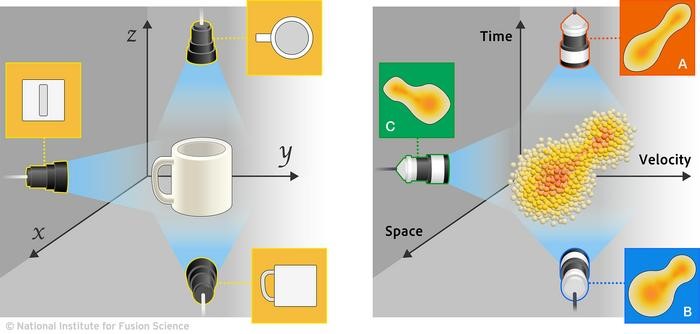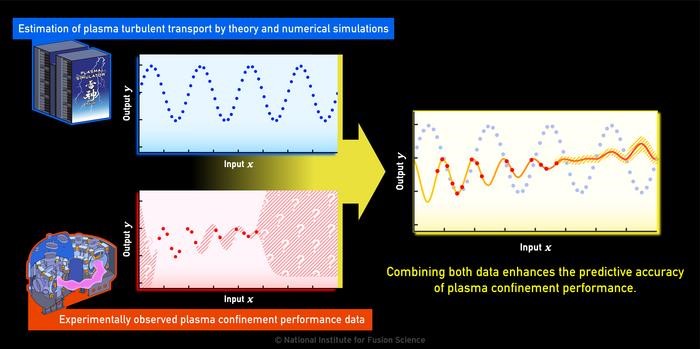Breaking Barriers: The Future of Data Storage at Light Speed Has Arrived
Researchers have introduced a programmable photonic latch that revolutionizes data storage and processing in optical systems. This innovation significantly outperforms traditional electronic memory by minimizing latency and energy consumption.
This high-speed, adaptable volatile photonic memory holds the potential to transform AI, sensing, and other demanding computational applications.

Figure 1. Data Storage
Technology of Programmable Photonic Latches
Researchers have developed an innovative optical memory device known as the programmable photonic latch, which combines speed and scalability. This cutting-edge memory unit delivers a high-speed solution for temporary data storage in optical processing systems, leveraging silicon photonics to boost performance. Figure 1 shows Data Storage.
Modeled after the set-reset latch, a foundational electronic memory device that stores a single bit of data, the programmable photonic latch operates by toggling between two states: set (1) and reset (0), in response to input signals.
Advancing Optical Systems with High-Speed Memory
"Over the past decades, significant advancements have been made in optical communications and computing, yet data storage has largely relied on electronic memory," said Farshid Ashtiani of Nokia Bell Labs [1]. "Integrating fast optical memory with optical processing systems, as well as communication and sensing technologies, could greatly enhance their energy efficiency and throughput."
In a paper published today in Optics Express, a journal by the Optica Publishing Group, the researchers detailed a proof-of-concept experiment showcasing a photonic latch implemented on a programmable silicon photonic platform. The photonic latch boasts features such as optical set and reset, complementary outputs, scalability, and compatibility with wavelength division multiplexing (WDM), positioning it as a promising solution for faster and more efficient optical processing systems.
"Large language models, like ChatGPT, depend on vast numbers of simple mathematical operations, such as multiplication and addition, performed iteratively to learn and generate responses," Ashtiani explained. "Our optical memory technology could facilitate high-speed data storage and retrieval for these systems, significantly accelerating their operations. Although a commercial optical computer remains a long-term objective, this high-speed optical memory represents a crucial step toward that vision."
Challenges and Innovations in Optical Memory
Optical technologies have played a critical role in revolutionizing communication systems, enabling advancements in long-haul data transmission, data center connectivity, and emerging fields like optical interconnects and computing. Despite these strides, data storage has largely remained electronic due to its scalability, compactness, and cost efficiency. This reliance on electronic memory poses significant challenges for optical processing systems, as the conversion of optical data to electronic formats—and back—adds latency and increases energy consumption.
While extensive research has been conducted on optical memory, most approaches depend on bulky, expensive, and energy-intensive setups or specialized materials that are not compatible with standard silicon photonic manufacturing processes. These limitations result in higher costs and lower fabrication yields.
To address these challenges, researchers have developed an integrated programmable photonic latch using silicon photonic micro-ring modulators. This design is based on optical universal logic gates and can be implemented with commercially available silicon photonic chip fabrication technologies. By combining two optical universal logic gates, the researchers created a photonic latch capable of storing and maintaining optical data, paving the way for more efficient and scalable optical processing systems.
High-Speed and Scalable Optical Data Storage Solutions
Ashtiani highlights one of the key benefits of the new system: its scalability. "Each memory unit has an independent input light source, allowing multiple units to operate independently without interference from optical power loss propagation," he explained. "These memory units can also be co-designed with existing silicon photonic systems, ensuring reliable construction and high production yields."
Another advantage is the wavelength selectivity of the photonic memory unit, which enables seamless integration with wavelength division multiplexing (WDM). The micro-ring modulators in the unit are engineered to operate at specific wavelengths, allowing multi-bit data storage within a single unit. Additionally, the memory unit boasts an ultra-fast response time, measured in tens of picoseconds, surpassing the clock speeds of advanced digital systems and making it ideal for high-speed optical data storage.
To validate this optical memory approach before creating dedicated chips, the researchers utilized a programmable photonic platform to implement universal logic gates and the optical latch, conducting experiments and realistic simulations. The gates were tested under various input conditions, and even in the presence of random variations, they reliably generated the desired outputs. Similarly, the latch accurately performed all functions—set, reset, and hold—despite variations in input power.
The researchers are now focused on exploring ways to make these memory units more practical for real-world applications. Their objectives include scaling the technology to support a greater number of memory units and developing specialized photonic memory chips. By leveraging the system's compatibility with wavelength division multiplexing (WDM), they aim to increase on-chip memory density [2]. They also seek to streamline the manufacturing process to integrate both the photonic memory circuits and the electronic components necessary for control.
References:
- https://www.sciencedaily.com/releases/2025/01/250123110233.htm?utm_source=chatgpt.com
- https://scitechdaily.com/unlocking-the-speed-of-light-the-future-of-data-storage-is-here/
Cite this article:
Janani R (2025), Breaking Barriers: The Future of Data Storage at Light Speed Has Arrived, AnaTechMaz, pp.98















